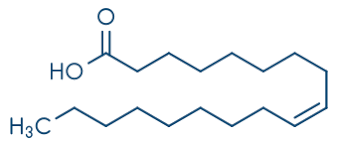The K232 and K270 indices play a key role in assessing the quality of olive oil.

09 / 07 / 2025
Chemical analysis of olive oil, together with organoleptic tasting , is carried out in order to obtain its classification in one of the existing commercial categories: extra virgin, virgin or lampante.
Just as a doctor can determine through analysis whether we have followed a healthy lifestyle, we can determine its quality through chemical analysis of oil.
Factors such as the degree of acidity, its peroxide index and/or the K232 and K270 factors of the olive oil allow us to determine the final quality of the oil and under which category it should be marketed.
What values indicate the quality of oils in a chemical analysis?
In the chemical analysis of olive oil, three tests come into play:
Acidity level . This measures the percentage of free fatty acids in relation to oleic acid and determines the quality of the fruit (the olive) used. Acidity level is often confused with the flavor of the oil. However, the two are not related, since acidity can only be determined in a laboratory and not by taste.
Peroxide value (PI). Determines the degree of rancidity or initial oxidation of olive oil and the deterioration of natural antioxidants. It measures the quality of virgin olive oil production.
UV spectrometry. This is where the K232 and K270 factors come into play, along with Delta-K. It measures the oil's absorbance at different wavelengths and determines the oil's quality and state of preservation.
For an olive oil to be considered extra virgin, it must not exceed 0.8% acidity. Following established values, an extra virgin olive oil will never have a peroxide index higher than 20, a K232 index of 2.50, or a K270 index of 0.22.
Peroxide index
As we've mentioned, the peroxide index measures the quality of the oil's production . When extra virgin olive oil becomes rancid, it not only acquires unpleasant odors and flavors, but its antioxidants, which are very beneficial to our health, are also destroyed.
Oxidation is a natural process that occurs over time. However, it can be accelerated by certain errors in olive oil production, such as the temperature of the production process or excessive milling time, as well as poor subsequent storage.
Therefore, the lower the PI, the higher the quality of the olive oil examined.
UV spectrometry
Factors K232 and K270 are measured in this test. These compounds are a result of the oil's state of preservation , modifications during technological processes, contamination, or adulteration.
In this test, ultraviolet light is transmitted through a mixture of oil and solvent, measuring its absorption capacity. Some compounds generated by oxidation absorb at wavelengths of 232 nanometers, and others at 270. These are the parameters known as K232 and K270.
Therefore, a higher value of K232 or K270 implies greater oxidation of the oil , so its quality will be worse.
Are these values related?
The three previous tests (acidity, peroxide value, and UV spectrometry) are essential for determining the quality of an oil in a chemical analysis . However, the peroxide value and UV spectrometry are related. Although all three tests measure the degree of deterioration of an oil, the acidity level is not misleading.
However, it's important to know that oxidation occurs in two phases: primary and secondary. The values obtained from the peroxide index can mean two things: very fresh oil or very rancid oil, since the peroxide values in oil fluctuate depending on the time of analysis.
Therefore, to ensure that we are dealing with virgin olive oil, it is necessary to perform UV spectrometry testing. If we have a low PI and low K values, there is no doubt: the olive oil is a quality virgin oil.
Noticias



